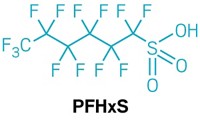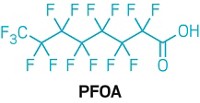Advertisement
Grab your lab coat. Let's get started
Welcome!
Welcome!
Create an account below to get 6 C&EN articles per month, receive newsletters and more - all free.
It seems this is your first time logging in online. Please enter the following information to continue.
As an ACS member you automatically get access to this site. All we need is few more details to create your reading experience.
Not you? Sign in with a different account.
Not you? Sign in with a different account.
ERROR 1
ERROR 1
ERROR 2
ERROR 2
ERROR 2
ERROR 2
ERROR 2
Password and Confirm password must match.
If you have an ACS member number, please enter it here so we can link this account to your membership. (optional)
ERROR 2
ACS values your privacy. By submitting your information, you are gaining access to C&EN and subscribing to our weekly newsletter. We use the information you provide to make your reading experience better, and we will never sell your data to third party members.
Persistent Pollutants
U.S. report proposes lower safe level for perfluorochemical exposure
ATSDR daily dose numbers for PFOS and PFOA are one-tenth those of EPA
by Cheryl Hogue
June 22, 2018
| A version of this story appeared in
Volume 96, Issue 26
A federal report once suppressed by the U.S. military and EPA proposes safe daily levels of consumption for two perfluorochemicals that are one-tenth those of EPA.
The draft toxicity analysis, released June 20 by the Agency for Toxic Substances & Disease Registry (ATSDR), would set a minimal risk level of 3 × 10–6 mg of perfluorooctanoic acid (PFOA) per kilogram of body weight per day and of 2 × 10–6 mg/kg/day for perfluorooctanesulfonic acid (PFOS). Formerly widely used but no longer manufactured domestically, these chemicals taint drinking water sources at scores of sites across the U.S. and, increasingly, in other countries.
ATSDR’s minimal risk levels estimate daily human exposure to a substance that is likely to be without appreciable risk of health effects other than cancer. The agency uses these levels to identify contaminants and potential health effects at hazardous waste sites—but not for regulatory purposes, the draft report cautions.

a Given in milligrams of a substance per kilogram of body weight per day.
ne = not estimated by EPA.
Source: Agency for Toxic Substances & Disease Registry (ATSDR)
ATSDR’s draft levels contrast with EPA’s safe daily dose levels of 2 × 10–5 mg/kg/day each for PFOA and PFOS, set in 2016. Such EPA reference doses are maximum acceptable oral human exposure levels that are likely to be without appreciable health risks during a lifetime. EPA often uses these numbers to derive regulatory and cleanup levels for pollutants.
EPA currently is evaluating the need to set a legally enforceable limit for PFOA and PFOS in drinking water.
ATSDR’s numbers would translate into drinking water levels of 11 parts per trillion for PFOA and 7 ppt for PFOS, says Laurel Schaider, a researcher at the Silent Spring Institute, which studies the links between chemical exposure and women’s health. In comparison, EPA’s 2016 advisory levels for these two chemicals in drinking water are 70 ppt either individually or combined.
ATSDR’s draft report also sets minimal risk levels for two other perfluoroalkyl compounds for which EPA has not estimated safe doses, perfluorohexanesulfonic acid and perfluorononanoic acid.





Join the conversation
Contact the reporter
Submit a Letter to the Editor for publication
Engage with us on Twitter